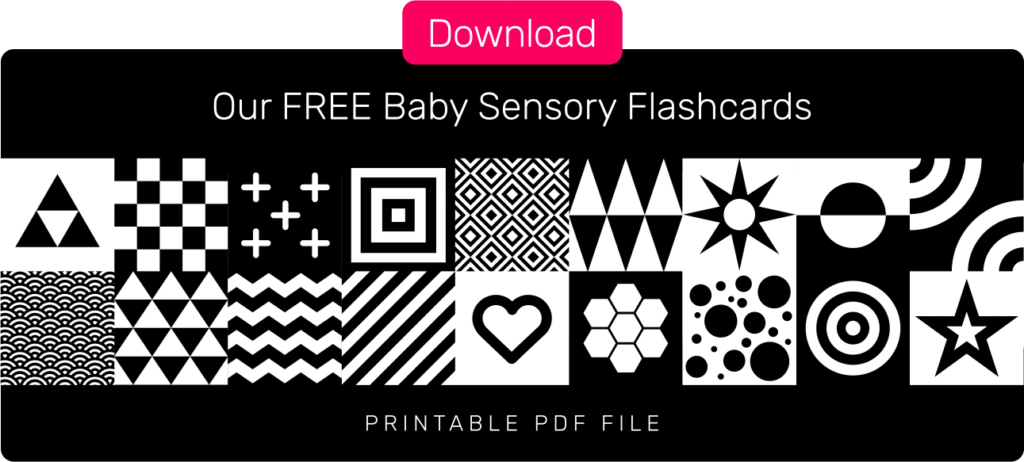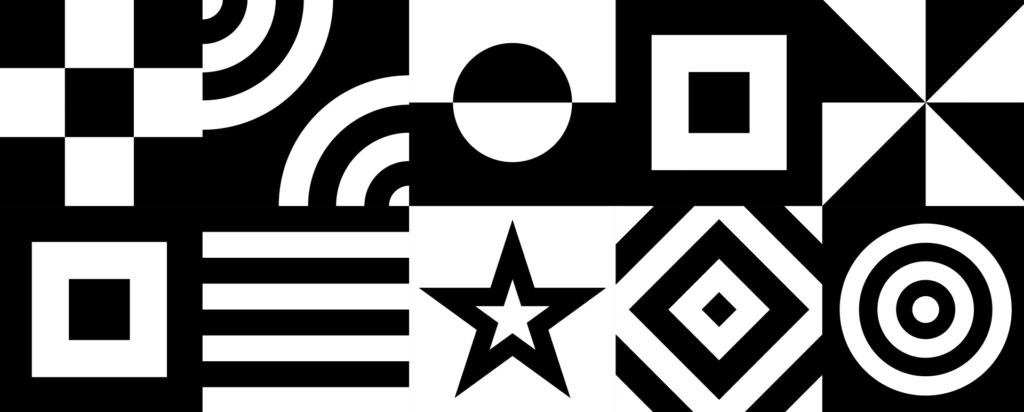
Welcoming a newborn into the world is a time filled with wonder and excitement. As new parents, we’re always looking for ways to support our baby’s development and growth. One of the simplest yet most effective tools you can introduce in those early months is black and white sensory flash cards.
These cards are more than just visually appealing; they play a crucial role in stimulating your baby’s visual and cognitive development.
Why Black and White?
In the first few months of life, a baby’s vision is not fully developed. Newborns can see, but their vision is still blurry and they can only focus on objects 8-12 inches away. During this period, they are most attracted to high-contrast images. Black and white patterns provide the starkest contrast, making them the easiest for newborns to see and focus on.
This is why black and white sensory flash cards are so effective—they capture your baby’s attention in a way that softer, more pastel colors cannot.
The Benefits of High-Contrast Images
Visual Development: The bold patterns on black and white flash cards help your baby practice focusing their eyes. As they track the images, they develop better visual acuity and coordination.
Cognitive Stimulation: Simple, high-contrast images are not just visually appealing; they also engage your baby’s brain. By exploring different patterns and shapes, your baby starts to recognize and differentiate between various forms, which is a foundational skill for later learning.
Concentration and Attention: The clear, distinct images on black and white cards can hold your baby’s attention longer than colorful, intricate designs. This extended focus time can help improve their concentration skills, a critical component for learning.
How to Use Black and White Sensory Flash Cards
Face Time: Hold the cards about 8-12 inches from your baby’s face. Slowly move them side to side to encourage your baby to follow the movement with their eyes.
Tummy Time: Place the cards on the floor during tummy time. This not only makes tummy time more engaging but also helps your baby practice lifting their head and improving neck strength.
Interactive Play: Make it a bonding activity. Describe the images on the cards to your baby, talking about the shapes and patterns. This interaction not only boosts their visual development but also supports early language skills.
Create a Mobile: Attach the flash cards to a mobile above your baby’s crib. The high-contrast images will captivate them, providing a calming and stimulating visual experience as they drift off to sleep.
Free Printable Baby Sensory Flashcards
Why not take a moment to download our FREE printable baby sensory flashcards!
There are 40 captivating black-and-white shapes and patterns, specially designed to stimulate and engage your baby’s developing senses, free to download and print for yourself.

Choosing the Right Cards

When selecting black and white sensory flash cards, look for ones that feature a variety of simple shapes, patterns, and images. Some cards are designed to evolve with your baby, starting with very basic patterns and progressing to more complex images as your baby’s vision and cognitive abilities develop.
Would Sensory ‘Video’ Work?
Absolutely! Find the right baby sensory flashcard video and you can entertain and captivate your baby at no cost or hassle!
Check out our Baby Sensory Playlist or try out the video below.
Final Thoughts
Black and white sensory flash cards are a powerful, yet simple tool to aid in your newborn’s early development. They offer a world of benefits – from visual and cognitive stimulation to improved concentration and bonding opportunities. Incorporating these cards into your baby’s daily routine can set the stage for a lifetime of learning and exploration.
So why not give it a try?
You’ll be amazed at how such a simple tool can have such a profound impact on your baby’s growth and development.

